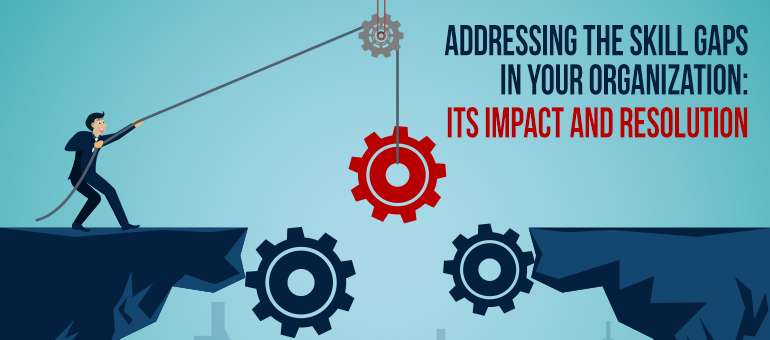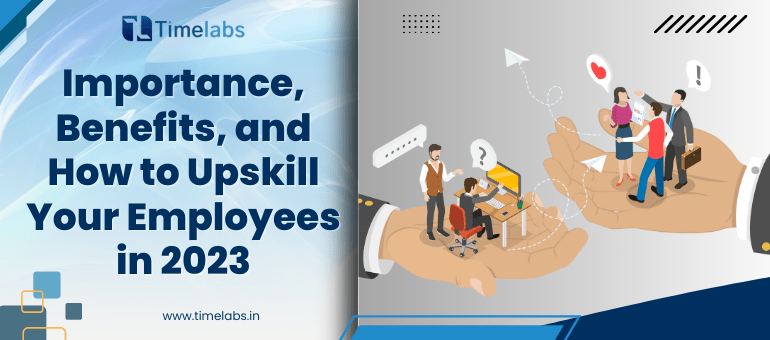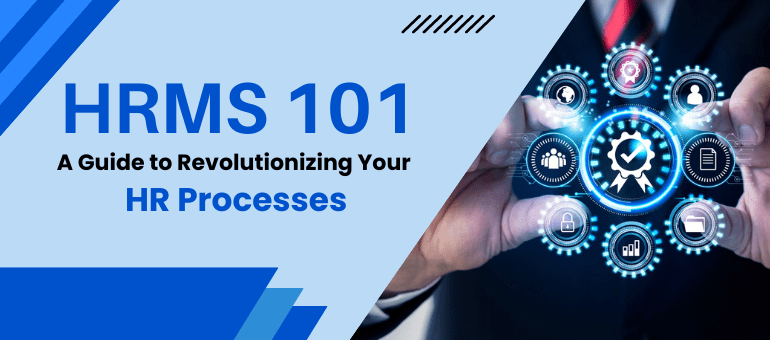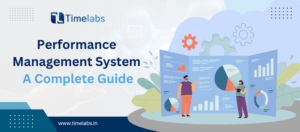The business world is rapidly changing. There is a definite digital shift happening across industries, and organizations have already started to understand the value of upskilling their workforce. With so much technological advancement happening around you, one needs to think of ways to stay relevant to sustain the course.
You have to think beyond using an HRMS to help you during the performance appraisal cycle. It can only help when your employees are resourceful.
New-age employees are looking for challenging roles but often back out due to skill gaps. According to a survey, 54% of all workers need to replace their existing skills or update them due to the rapid technological developments. As you plan to consider cloud HR solutions to ease your day, similarly, you need to invest in upskilling your workforce to achieve organizational goals.
The first thing to resolve the skill gap issue is to address it. You should be able to find out if your employees lack the skills required to do a specific task or job. Maybe your sales team possesses a limited amount of knowledge about the product. How do you bring productivity in such a scenario?
Setting clear business objectives and goals is crucial to bridging the skill gap. How? When you know your business goals, you can align them with tasks and the required skill set that an employee must possess to achieve the desired result.
Let’s first understand the impact of skill gaps in an organization, and then we will discuss how you can identify and address them to create a productive work environment.
Impact of Skill Gaps
If your workforce lacks sufficient skills, it may cost you. There can be a high unemployment ratio as you may find it tough to allocate resources to do a specific job. You may think of hiring recruits. It also depends on the nature of the job.
If your production team is skilled in using machines, they may find it demotivating to work on software. It’s the first time for them, and they will need training. Some may pick the pace while others may not be capable of the job anymore.
Here, you can turn things in your favor. How? Instead of issuing a warning or extending probation, you can invest in training them. You may lose a capable employee if you don’t nurture their talent. Besides, it may take you a while to fill that position. The ideal time may cost you additional resources. Therefore, it’s crucial to address skill and knowledge gaps.
How to Address the Skill Gaps in Your Organization?
Earlier in the blog, we discussed setting clear goals and objectives and aligning skill sets to achieve desired outcomes. Let’s know other ways to address skill gaps now. Consider both qualification and capabilities
During an interview, HR asks questions to a candidate regarding their academic qualifications. That’s there! But the business world has evolved, and organizations are hiring candidates based on their current skill set or their level of curiosity to change things. It’s the era of entrepreneurs, and relying on degrees to get a job seems dated.
Similarly, your existing workforce may have required qualifications: that’s why they got the job in the first place. But are they adding any value now? Are they skilled enough to take challenging roles? Or, they need to upskill themselves.
Let’s find that out through an interesting example. If you’re looking for a reliable HR management software vendor in Jaipur, you would consider the efficiency of the software and not the qualification of the vendor. Your work is to find feature-loaded HR software.
In another scenario, one of your employees may not be well-qualified academically but is performing well consistently. In both cases, you should invest in skill development. Find them a mentor who can help them upgrade. But the crux is to consider both qualification and capability. It’s the need of the hour.
Identify the key performance indicators
Set measurable key performance indicators. Whether it’s related to your customer service department or marketing team, you should be able to track progress. It can be in the form of scores. What’s the highest rating for a quick resolution given to a customer? You can define parameters and assess accordingly. It’s similar to using your HR software can help in generating reports, but you need to sit with the leadership team to define these parameters.
You should do it as you can find if your employees are lacking somewhere and need training. Or they may demonstrate expertise in certain areas. For that, you can reward them. Appreciation and acknowledgment boost the morale of an employee. You should talk to them about how you can offer growth opportunities. It leads us to our next point.
Personalize appraisal discussions
Performance appraisal is a period when employees get to know how they are doing. Are they building skills, or how can they improve? As HR or business leaders, you can take this opportunity to indulge in a personalized discussion with employees and understand their perspectives. They may be facing skill gap issues.
If an employee is facing difficulty using a new marketing tool in the past, you can help. It could be the sole reason why he didn’t perform in the last few months. One may need critical thinking skills to understand the nuances of the tool. Or you need training, for that matter. Understand their pain points and offer relevant feedback.
Evaluate your employees’ progress
Now that we have shared different ways to address skill gaps, it’s good to use them to upskill your workforce. While at it, you should not forget to evaluate their progress. We insist on paying attention to details as you do when calculating salaries using HR payroll software. Numbers don’t lie.
You can connect with your internal and external teams to collect feedback. If an employee gets training to handle a tool to enhance the customer service experience, you can ask for feedback or suggestion from the supervisor or the customers directly. This way, you would know if your efforts are bearing fruit. Besides, it will encourage the employee to become more productive and efficient. It’s a win-win situation for both parties.
Final Thoughts
Reskilling is the key. Your organization needs reliable and skilled people to run the show. It’s your responsibility to nurture them and make them capable enough to pursue leadership roles.
When you find someone lagging, the onus lies on your shoulder to first acknowledge the skill gaps, and then you should work towards turning a low-productive employee into a star performer. It can happen when you put effort into creating engaging skill-based training programs for your employees. It is how you can build the leaders of tomorrow. Good luck!



